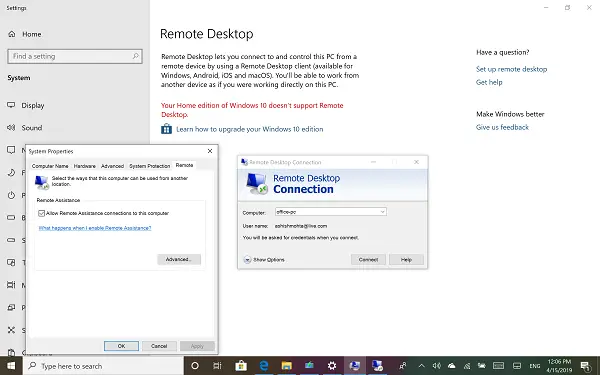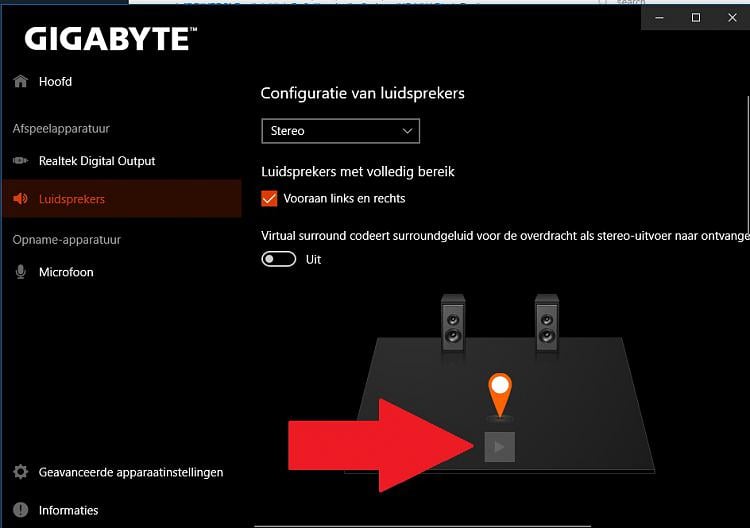You can access Windows Virtual Desktop resources on devices with Windows 10, Windows 10 IoT Enterprise, and Windows 7 using the Windows Desktop client.
This does not support Window 8 or Windows 8.1. This only supports Azure Resource Manager objects, to support objects without Azure Resource Manager, see Connect with Windows Desktop (classic) client. This does not support the RemoteApp and Desktop Connections (RADC) client or the Remote Desktop Connection (MSTSC) client. Microsoft Remote Desktop. Use the Microsoft Remote Desktop app to connect to a remote PC or virtual apps and desktops made available by your admin. The app helps you be productive no matter where you are. Getting Started Configure your PC for remote access first. Download the Remote Desktop assistant to your PC and let it do the work for you.
Important
This does not support Window 8 or Windows 8.1.
This only supports Azure Resource Manager objects, to support objects without Azure Resource Manager, see Connect with Windows Desktop (classic) client.
This does not support the RemoteApp and Desktop Connections (RADC) client or the Remote Desktop Connection (MSTSC) client.
Microsoft Remote Desktop Services Manager Windows 10

Install the Windows Desktop client

Download the client based on your Windows version:
During installation to determine access, select either:
- Install just for you
- Install for all users of this machine (requires admin rights)
To launch the client after installation, use the Start menu and search for Remote Desktop.
Subscribe to a Workspace
To subscribe to a Workspace, choose to either:
- Use a work or school account and have the client discover the resources available for you
- Use the specific URL of the resource
To launch the resource once subscribed, go to the Connection Center and double-click the resource.
Tip
To launch a resource from the Start menu, you can find the folder with the Workspace name or enter the resource name in the search bar.
Use a user account
- Select Subscribe from the main page.
- Sign in with your user account when prompted.
The resources grouped by workspace will appear in the Connection Center.
Note
The Windows client automatically defaults to Windows Virtual Desktop (classic).
Remote Desktop Connection Windows 10 Download Free
However, if the client detects additional Azure Resource Manager resources, it adds them automatically or notifies the user that they're available.
Use a specific URL
Select Subscribe with URL from the main page.
Enter either the Workspace URL or an email address:
- For Workspace URL, use the URL provided by your admin.
Available Resources URL Windows Virtual Desktop (classic) https://rdweb.wvd.microsoft.com/api/feeddiscovery/webfeeddiscovery.aspxWindows Virtual Desktop https://rdweb.wvd.microsoft.com/api/arm/feeddiscoveryWindows Virtual Desktop (US Gov) https://rdweb.wvd.azure.us/api/arm/feeddiscovery- For Email, use your email address.
The client will find the URL associated with your email, provided your admin has enabled email discovery.
Select Next.
Sign in with your user account when prompted.
The resources grouped by workspace will appear in the Connection Center.
Next steps
To learn more about how to use the client, check out Get started with the Windows Desktop client.
Windows 10 Microsoft Iso
If you're an admin interested in learning more about the client's features, check out Windows Desktop client for admins.
How to Use Remote Desktop Connection Manager?
RDCMan works with Microsoft Remote Assistance, pc Anywhere, Microsoft Remote Desktop, Radmin, TeamViewer and more.
Remote Desktop Manager Windows 10 Microsoft Account
Listed below are different ways of how RDCMan can be used:
Microsoft Remote Desktop Connection Manager
- Administrators can use RDCMan to organize connections by groups via top-level hierarchies. In the two-pane interface, connection options comprise of all that the admin can define within a native RDP session. Admins are capable of only importing servers via a text file.
- RDCMan is considered to be only useful for RDP connections. This is because it is perfect for administrators in Windows-only deployments who desire to have a remote desktop management tool that exclusively focus on RDP.
- RDCMan is considered to be particularly useful for testers, systems administrators, developers, and lab managers work with server labs, groups of computers, or large server farms, such as automated check-in systems and data centers, where regular access to each machine is essential. The potential to consolidate multiple RDP connections into a single window decreases desktop clutter.
- With Windows 10, it is only possible for pro users to grant access to their computers. The users will have to follow the following process:
- Open File Explorer
- Right-click This PC
- Select Properties, Remote Settings
- Select Allow remote connections to this computer
- Turn off Allow connections only from computers running Remote Desktop with Network Level Authentication.
